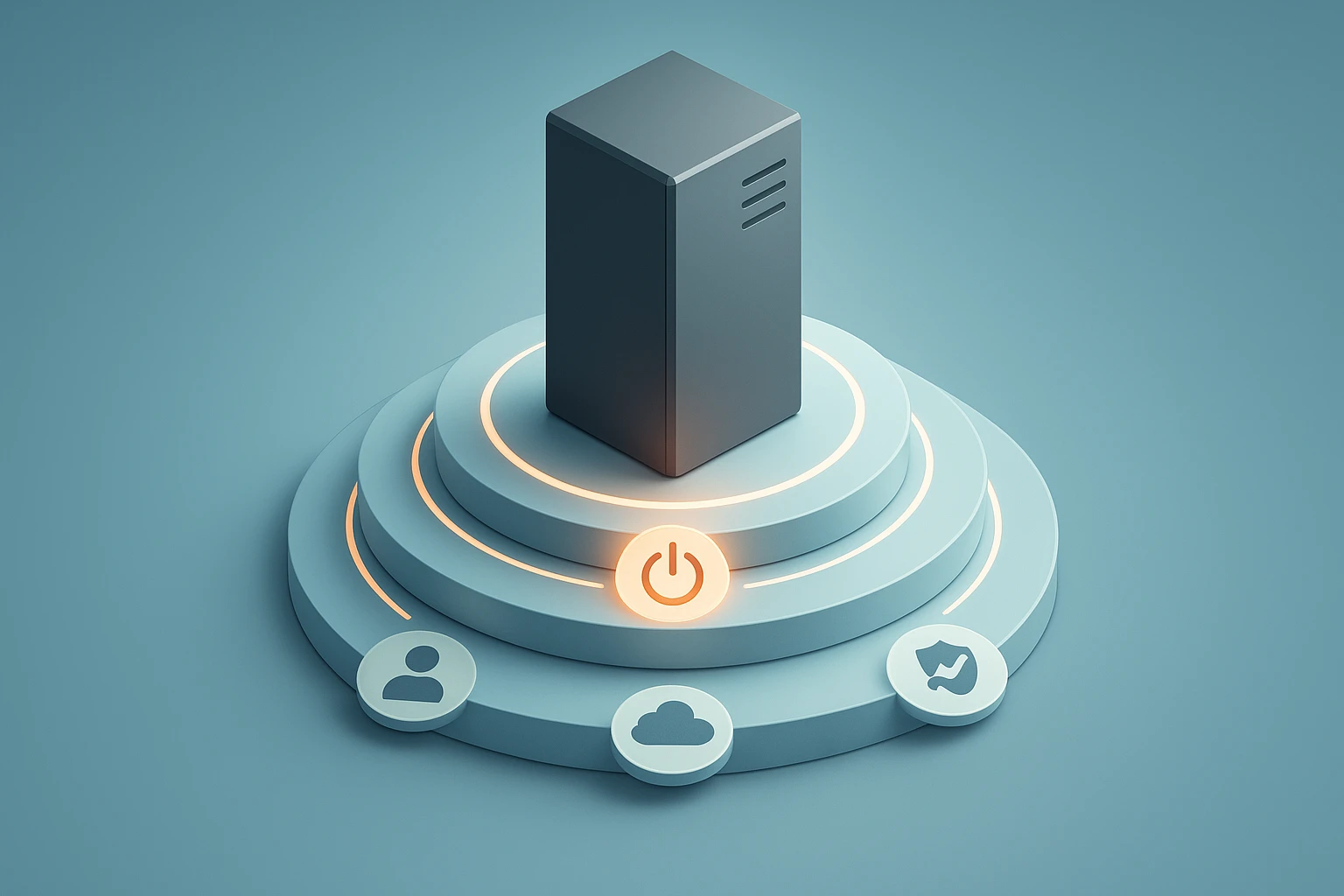How to Analyze Boot Logs in Linux
Analyzing Linux boot logs: terminal displaying journalctl and dmesg output with timestamps, error warnings highlighted, grep filters, boot sequence and troubleshooting notes. & fixes

Sponsor message — This article is made possible by Dargslan.com, a publisher of practical, no-fluff IT & developer workbooks.
Why Dargslan.com?
If you prefer doing over endless theory, Dargslan’s titles are built for you. Every workbook focuses on skills you can apply the same day—server hardening, Linux one-liners, PowerShell for admins, Python automation, cloud basics, and more.
When your Linux system refuses to start properly, or when mysterious errors appear during the boot process, understanding what's happening beneath the surface becomes critical. Boot logs serve as your system's diary, recording every step, success, and failure that occurs as your machine comes to life. These logs are the difference between spending hours troubleshooting blindly and pinpointing issues within minutes, making them an essential skill for anyone managing Linux systems in professional or personal environments.
Boot log analysis is the systematic examination of messages generated during the Linux startup sequence, from the moment your hardware initializes until your system reaches a fully operational state. This process involves understanding multiple logging mechanisms, interpreting cryptic error messages, and connecting seemingly unrelated events to identify root causes. Whether you're dealing with hardware conflicts, driver failures, or service startup problems, boot logs provide multiple perspectives on what's actually happening during those critical seconds.
Throughout this comprehensive guide, you'll discover the essential tools and techniques for accessing, interpreting, and acting upon boot log information. You'll learn where different types of boot messages are stored, how to filter through thousands of log entries to find relevant information, and what specific error patterns indicate common problems. By the end, you'll have developed the confidence to diagnose boot-related issues independently and implement effective solutions based on what your system's logs are telling you.
Understanding the Linux Boot Process and Logging Architecture
The Linux boot sequence involves multiple stages, each generating its own set of log messages that get captured through different mechanisms. When you press the power button, your system's firmware (BIOS or UEFI) performs initial hardware checks before handing control to the bootloader, typically GRUB. The bootloader then loads the Linux kernel into memory, which begins initializing hardware, mounting filesystems, and starting essential services. Throughout this entire process, messages are generated and stored in various locations depending on the boot stage and your system's configuration.
Modern Linux distributions primarily use systemd as their init system, which has fundamentally changed how boot logs are collected and stored. The systemd-journald service captures messages from the kernel, early boot stages, and all system services, storing them in a binary format that offers advantages in terms of indexing and querying speed. However, traditional syslog-based logging still exists on many systems, and understanding both approaches is necessary for comprehensive boot log analysis across different distributions and configurations.
"The kernel ring buffer holds the earliest messages from system startup, messages that would otherwise be lost before persistent logging services become available. These initial messages often contain the most critical information about hardware detection failures."
The kernel maintains its own circular buffer called the ring buffer, which stores messages generated during the earliest boot stages before any filesystem is mounted. This buffer has a fixed size and operates on a first-in-first-out basis, meaning older messages get overwritten as new ones arrive. Understanding this limitation is crucial because critical early boot errors might disappear if you wait too long to examine them, especially on systems with verbose logging or long uptimes.
Primary Boot Log Locations and Access Methods
Different types of boot information reside in distinct locations within your Linux filesystem, and knowing where to look significantly reduces troubleshooting time. The most commonly accessed log files include /var/log/boot.log, which contains messages from the boot process itself, and /var/log/messages or /var/log/syslog, which capture system-wide messages including boot events. However, the availability and naming of these files varies across distributions, with some systems consolidating everything into the systemd journal.
Essential Commands for Accessing Boot Logs
dmesg- Displays kernel ring buffer messages from the current boot sessiondmesg --level=err,warn- Filters kernel messages to show only errors and warningsjournalctl -b- Shows all messages from the current boot using systemd journaljournalctl -b -1- Displays messages from the previous boot sessionjournalctl -b --priority=err- Shows only error-level messages from current bootcat /var/log/boot.log- Reads the traditional boot log file directlyless /var/log/kern.log- Views kernel-specific messages in paginated formatjournalctl -k- Displays kernel messages from the systemd journaljournalctl --list-boots- Shows available boot sessions in the journallast reboot- Lists system reboot history with timestamps
Interpreting Kernel Messages and Hardware Detection
Kernel messages form the foundation of boot log analysis because they reveal how your system detects and initializes hardware components. These messages follow a specific format that includes timestamps, severity levels, and subsystem identifiers. Learning to read this format allows you to quickly identify which component generated a message and assess its importance. Kernel messages use priority levels ranging from emergency (most severe) to debug (least severe), with most boot issues manifesting as error, warning, or critical level messages.
Hardware detection messages appear in a predictable sequence during boot, starting with CPU initialization, followed by memory detection, PCI device enumeration, storage controller initialization, and network interface detection. When hardware fails to initialize properly, the kernel typically generates error messages that include specific device identifiers, error codes, and sometimes suggestions for resolution. Understanding this sequence helps you determine whether a problem occurred early in the boot process or later during service initialization.
| Kernel Log Level | Priority Name | Typical Meaning | Action Required |
|---|---|---|---|
| 0 | EMERG | System is unusable, immediate crash likely | Critical intervention needed immediately |
| 1 | ALERT | Action must be taken immediately | Investigate and resolve without delay |
| 2 | CRIT | Critical conditions affecting functionality | Address promptly to prevent system failure |
| 3 | ERR | Error conditions that need attention | Investigate when possible, may affect features |
| 4 | WARNING | Warning conditions that might cause issues | Monitor and address during maintenance |
| 5 | NOTICE | Normal but significant conditions | Informational, no action typically needed |
| 6 | INFO | Informational messages | Reference only, normal operation |
| 7 | DEBUG | Debug-level messages for troubleshooting | Used only during active debugging |
"Timestamps in boot logs are your roadmap to understanding the sequence of events. When multiple errors appear simultaneously, the timestamps reveal which failure triggered the cascade and which are merely symptoms."
Common Hardware Detection Patterns
Storage device detection generates some of the most critical boot messages, as failures here can prevent your system from accessing its root filesystem. Messages containing terms like "ata," "scsi," "nvme," or "mmc" relate to storage subsystems, and errors in these areas often indicate hardware failures, cable problems, or driver incompatibilities. When analyzing storage-related messages, pay attention to device naming conventions, as Linux assigns names like /dev/sda, /dev/nvme0n1, or /dev/mmcblk0 based on the controller type and detection order.
Network interface initialization messages reveal whether your system successfully detected network adapters and loaded appropriate drivers. These messages typically include the interface name (eth0, enp3s0, wlan0), MAC address, link speed capabilities, and driver information. Network detection failures often stem from missing firmware files, particularly for wireless adapters, and the boot logs will explicitly mention which firmware files the kernel attempted to load and whether those attempts succeeded or failed.
Analyzing Systemd Boot Sequence and Service Failures
After the kernel completes hardware initialization, systemd takes control and begins starting system services in a carefully orchestrated sequence based on dependencies. The systemd journal captures detailed information about every service that starts, including timing information, exit codes, and any output those services generate. This granular logging makes systemd-based systems particularly easy to troubleshoot, as you can see exactly which service failed and often why it failed, without needing to piece together information from multiple log files.
Service failures manifest in boot logs through specific patterns that indicate different types of problems. A service might fail to start due to configuration errors, missing dependencies, file permission problems, or resource constraints. The journal records not only the failure itself but also the exit code, which provides standardized information about the failure type. Exit code 0 indicates success, while non-zero codes indicate various failure conditions, with codes 1-255 representing different error categories defined by the service or systemd itself.
Advanced Systemd Journal Queries for Boot Analysis
journalctl -b --priority=warning..emerg- Shows warnings and more severe messagesjournalctl -b -u service-name.service- Filters messages for specific servicejournalctl -b --since "10 minutes ago"- Shows recent boot messagessystemd-analyze- Displays total boot time breakdownsystemd-analyze blame- Lists services by initialization timesystemd-analyze critical-chain- Shows dependency chain for bootsystemd-analyze plot > boot.svg- Creates visual boot timelinejournalctl -b -o json-pretty- Outputs boot logs in JSON formatjournalctl --disk-usage- Shows space consumed by journal logsjournalctl --verify- Checks journal file integrity
Identifying Service Dependency Problems
Service dependencies create complex relationships where one service must wait for another to complete before starting. When dependency chains break, cascading failures can prevent multiple services from starting, even though only one underlying problem exists. Boot logs reveal these dependency issues through messages indicating that services are waiting for dependencies that never become available. The systemd-analyze critical-chain command visualizes these dependencies, showing you which services are on the critical path for reaching your default target.
"The difference between a service that failed and a service that was deliberately not started is crucial. Boot logs distinguish between these states, but misinterpreting them leads to chasing problems that don't exist."
Timeout errors represent another common category of service failures, occurring when a service takes longer than its configured timeout period to start. These failures don't necessarily indicate that the service is broken; sometimes the service is simply slow to initialize due to resource constraints or network dependencies. Boot logs will show timeout failures with specific messages indicating that systemd terminated the service after the timeout expired, and you can often resolve these issues by adjusting timeout values in the service configuration rather than fixing the service itself.
Troubleshooting Boot Performance Issues
Slow boot times frustrate users and can indicate underlying problems even when the system eventually starts successfully. Analyzing boot performance requires looking beyond simple error messages to understand timing relationships between different boot stages. The systemd-analyze suite of tools provides quantitative data about boot performance, breaking down the time spent in firmware initialization, kernel loading, userspace initialization, and individual service startup. This data helps you identify bottlenecks and optimize boot sequences for faster startup times.
Firmware initialization time often consumes a significant portion of the boot process, sometimes taking longer than the entire Linux boot sequence. This time appears in boot logs as the gap between power-on and the first kernel messages. While you can't directly control firmware behavior through Linux, understanding that firmware delays exist prevents you from wasting time optimizing Linux components that aren't actually causing slowness. Some firmware settings, particularly those related to device enumeration and network boot options, can be adjusted to reduce this initialization time.
| Boot Stage | Typical Duration | Primary Factors | Optimization Approaches |
|---|---|---|---|
| Firmware (BIOS/UEFI) | 2-15 seconds | Hardware detection, POST, boot device selection | Disable unused devices, fast boot options, update firmware |
| Bootloader (GRUB) | 1-3 seconds | Configuration complexity, timeout settings | Reduce timeout, simplify menu, use GRUB2 fast boot |
| Kernel Initialization | 1-5 seconds | Hardware detection, driver loading, module initialization | Remove unnecessary modules, optimize initramfs |
| Userspace (systemd) | 5-20 seconds | Service dependencies, parallel vs sequential startup | Disable unnecessary services, fix dependency chains |
| Display Manager | 2-8 seconds | Graphics initialization, display manager complexity | Use lightweight display manager, optimize graphics drivers |
Identifying Resource Bottlenecks During Boot
Resource constraints during boot manifest differently than during normal operation because the system is simultaneously initializing multiple components. Disk I/O bottlenecks are particularly common during boot, as numerous services attempt to read configuration files, load libraries, and access system resources concurrently. Boot logs may not explicitly state "disk I/O bottleneck," but you can infer this condition when you see multiple services with unusually long startup times clustered together, particularly on systems with traditional spinning hard drives rather than SSDs.
Memory pressure during boot rarely causes complete failures but can significantly slow the boot process. When available memory runs low during boot, the kernel may need to swap data to disk or delay starting memory-intensive services. Boot logs will show increased time between service startups and may include kernel messages about memory allocation. Monitoring memory-related messages in boot logs helps you determine whether adding RAM would improve boot performance or whether memory-intensive services need reconfiguration.
"A service taking 30 seconds to start isn't necessarily broken. Context matters. That same delay might be normal for a database service recovering a large dataset but would be abnormal for a simple logging service."
Persistent Boot Problems and Log Retention
Intermittent boot problems present unique challenges because they don't occur consistently, making them difficult to diagnose when they're not actively happening. Proper log retention becomes essential for tracking down these elusive issues. By default, many Linux distributions configure systemd-journald to retain logs only from the current boot session, meaning that information about previous boot failures disappears after a successful boot. Configuring persistent journal storage ensures that you can review logs from previous boots, even after the system has successfully started.
Enabling persistent journal storage requires creating the appropriate directory and configuring systemd-journald to use it. The journal can consume significant disk space over time, especially on systems with verbose logging, so configuring size limits prevents the journal from filling your filesystem. Boot logs from multiple previous sessions allow you to identify patterns in intermittent failures, such as problems that only occur after specific types of shutdowns or when particular hardware combinations are present.
🔧 Configuring Persistent Boot Log Storage
sudo mkdir -p /var/log/journal- Creates persistent journal directorysudo systemd-tmpfiles --create --prefix /var/log/journal- Sets proper permissionssudo systemctl restart systemd-journald- Activates persistent loggingjournalctl --list-boots- Verifies multiple boot sessions are storedjournalctl --vacuum-size=500M- Limits journal size to 500MBjournalctl --vacuum-time=30d- Removes entries older than 30 days
Creating Automated Boot Log Analysis
Manually reviewing boot logs after every startup becomes impractical for systems that reboot frequently or for managing multiple machines. Automated analysis scripts can scan boot logs for known error patterns and alert you to potential problems before they cause service disruptions. These scripts typically search for specific error messages, service failures, or timing anomalies that indicate degrading performance. While automated analysis can't catch every possible problem, it significantly reduces the time spent on routine log review.
Creating effective automated analysis requires understanding which patterns indicate genuine problems versus normal operational messages. For example, certain warnings appear in boot logs on every startup but don't actually indicate problems, such as informational messages about kernel features that aren't enabled. Your analysis scripts should filter out these expected messages while flagging truly anomalous conditions. Regular refinement of these filters based on your specific environment improves accuracy and reduces false alerts over time.
Specialized Boot Scenarios and Edge Cases
Dual-boot configurations introduce additional complexity to boot log analysis because problems can stem from bootloader configuration, partition issues, or conflicts between operating systems. When analyzing boot logs in dual-boot scenarios, pay particular attention to messages about partition detection, filesystem mounting, and bootloader operations. Issues specific to dual-boot setups often involve the bootloader's inability to locate or properly chain-load the second operating system, and these problems manifest in bootloader logs rather than kernel logs.
"The absence of expected messages in boot logs can be as informative as the presence of error messages. When a device or service that normally appears in logs is missing, that silence speaks volumes."
Encrypted root filesystems require special attention during boot log analysis because the boot process must pause to decrypt the filesystem before mounting it. Problems with encrypted boots often relate to key management, cryptographic module loading, or timing issues with password prompts. Boot logs will show messages from the cryptsetup subsystem, and failures here prevent the system from accessing the root filesystem, resulting in a boot failure that drops you into an emergency shell. Understanding these encryption-specific messages helps you distinguish between encryption problems and other boot failures.
Network Boot and PXE Configuration Issues
Network-booted systems generate unique log patterns because they must obtain their kernel, initial ramdisk, and potentially their entire root filesystem over the network. Boot logs for network-booted systems include DHCP negotiation messages, TFTP transfer information, and NFS mount attempts. Failures in network boot scenarios often occur during the pre-kernel stages, making them harder to diagnose because the logging infrastructure hasn't fully initialized. Understanding the network boot sequence and where logs are captured during each stage is essential for troubleshooting these environments.
PXE boot problems frequently stem from network configuration issues, firewall rules blocking necessary protocols, or misconfigured boot servers. The boot logs will show whether the system successfully obtained an IP address, contacted the TFTP server, and downloaded the boot files. When network boot fails, you often need to examine logs on multiple systems: the client attempting to boot, the DHCP server providing IP addresses, and the TFTP server hosting boot files. Correlating timestamps across these different log sources reveals the point of failure in the network boot sequence.
Advanced Filtering and Search Techniques
Effective boot log analysis depends on your ability to filter thousands of log entries down to the relevant few that explain your problem. The journalctl command provides extensive filtering capabilities that go far beyond simple text searches. You can combine multiple filter criteria to narrow results by time range, priority level, specific services, or message content. Mastering these filtering techniques transforms boot log analysis from an overwhelming task into a precise diagnostic process.
🔍 Advanced Journal Filtering Techniques
journalctl -b -p err -g "pattern"- Combines priority filter with grep patternjournalctl -b _SYSTEMD_UNIT=nginx.service- Shows specific unit messagesjournalctl -b --since "2024-01-01" --until "2024-01-02"- Time range filteringjournalctl -b -t kernel- Shows messages from specific syslog identifierjournalctl -b _PID=1234- Filters messages by process ID
Regular expressions provide powerful pattern matching for finding specific error messages or identifying patterns across multiple log entries. When you know the general format of an error message but not the exact text, regular expressions allow you to match variations while excluding unrelated messages. The grep command, when used with journalctl output or traditional log files, supports both basic and extended regular expressions, giving you flexibility in how you construct your search patterns.
Correlating Events Across Multiple Log Sources
Complex boot problems often require examining multiple log sources simultaneously to understand the complete picture. A service failure might be caused by a kernel driver issue, which itself stems from a hardware problem. These relationships only become clear when you correlate timestamps and event sequences across kernel logs, service logs, and hardware logs. Building a timeline of events from multiple sources helps you identify causal relationships rather than just documenting symptoms.
"Effective boot log analysis isn't about reading every line. It's about knowing which lines matter for your specific problem and having the tools to find them quickly among thousands of irrelevant entries."
Log correlation becomes particularly important in distributed systems where boot issues on one machine might be caused by problems on another system. For example, a system that mounts network filesystems during boot might fail if the file server is unavailable, but the boot logs will only show the mount failure, not the underlying server problem. Developing the habit of checking related systems when analyzing boot logs prevents you from pursuing local solutions to remote problems.
Documentation and Knowledge Base Development
Building a personal or organizational knowledge base of boot problems and their solutions dramatically reduces troubleshooting time for recurring issues. When you encounter and resolve a boot problem, documenting the symptoms, log messages, and solution creates a reference for future incidents. This documentation should include the specific log messages that indicated the problem, the diagnostic steps you followed, and the resolution that ultimately worked. Over time, this knowledge base becomes an invaluable resource that captures institutional knowledge about your specific environment.
Effective documentation of boot issues requires capturing enough context that someone else (or future you) can understand the problem without having been present during the original troubleshooting. Include information about the system configuration, recent changes that might have triggered the problem, and any unsuccessful attempts at resolution. Screen captures or copied log excerpts provide concrete examples, but remember to sanitize any sensitive information like hostnames, IP addresses, or authentication credentials before storing documentation in shared knowledge bases.
Creating Boot Log Templates for Common Scenarios
Developing templates or checklists for analyzing specific types of boot problems streamlines your diagnostic process. A storage failure checklist might include checking for disk controller messages, filesystem mount failures, and I/O errors, while a network boot checklist would focus on DHCP messages, TFTP transfers, and network interface initialization. These templates ensure you don't overlook important diagnostic steps when under pressure to restore a non-booting system quickly.
Templates also serve as training tools for team members who are less experienced with boot log analysis. By following a structured checklist, junior administrators can perform initial diagnostics and gather relevant information before escalating to more experienced staff. This approach improves team efficiency and helps develop diagnostic skills across your organization. Regular updates to these templates based on new problems encountered keeps them relevant and comprehensive.
What's the difference between dmesg and journalctl for viewing boot logs?
The dmesg command displays messages from the kernel ring buffer, which is a fixed-size memory area that stores kernel messages including those from early boot. This buffer is volatile and cleared on reboot. The journalctl command accesses the systemd journal, which stores messages from the kernel, systemd itself, and all system services in a structured, persistent format. For early kernel messages, dmesg is often more reliable, but journalctl provides better filtering and can show logs from previous boots if persistent storage is enabled. In practice, you'll use both commands depending on what you're investigating.
Why do some boot error messages appear but the system still boots successfully?
Many boot error messages represent non-critical issues that don't prevent the system from functioning. These might include warnings about missing optional hardware, firmware files for devices not present in your system, or failed attempts to start services that aren't essential for basic operation. The Linux boot process is designed to be resilient, continuing past non-fatal errors to reach a usable state. However, these errors shouldn't be completely ignored, as they might indicate degraded functionality or problems that could become critical under different circumstances. Understanding which errors are cosmetic versus critical comes with experience in your specific environment.
How can I capture boot logs when the system won't boot at all?
When a system completely fails to boot, you have several options for capturing boot logs. Boot from a live USB or rescue disk, mount the failed system's root filesystem, and examine log files in /var/log if the system got far enough to write them. For earlier failures, you might need to enable serial console logging in your bootloader configuration, which outputs boot messages to a serial port that can be captured by another machine. Some systems support remote logging where boot messages are sent over the network to a central log server. In virtualized environments, hypervisor console logs often capture boot messages even when the guest system fails completely. The key is having an alternate logging path configured before the failure occurs.
What does it mean when journalctl shows no logs from previous boots?
When journalctl cannot display logs from previous boots, it typically means persistent journal storage is not enabled on your system. By default, many distributions configure systemd-journald to store logs only in volatile storage under /run/log/journal, which is cleared on each reboot. To preserve boot logs across reboots, you need to create the /var/log/journal directory and restart the systemd-journald service. After enabling persistent storage, journalctl will maintain logs from multiple boot sessions up to the configured size or time limits. This configuration is essential for troubleshooting intermittent boot problems that only occur occasionally.
How do I determine which boot log messages are actually important?
Determining message importance requires understanding both severity levels and context. Start by filtering for error and critical priority messages, as these typically indicate actual problems. However, context matters significantly—an error message about a device that doesn't exist in your system can be safely ignored, while a warning about a critical service might deserve immediate attention. Pay attention to messages that appear repeatedly across multiple boots, as these often indicate persistent configuration issues. Messages that appear immediately before a service failure or system problem are obviously relevant. Over time, you'll develop familiarity with the normal boot message pattern for your systems, making anomalies stand out more clearly. When in doubt, research specific error messages to understand their implications for your particular configuration.
Can boot log analysis help identify hardware failures before they cause system crashes?
Absolutely. Boot logs often contain early warning signs of hardware degradation before complete failure occurs. Increasing numbers of disk I/O errors, memory correction events, or temperature warnings can indicate hardware approaching failure. Storage devices typically show SMART errors or increasing reallocated sector counts in kernel messages before complete failure. Memory problems manifest as correctable ECC errors that appear in boot logs long before they cause system instability. Network interfaces might show increasing numbers of transmission errors or link flapping events. Regular review of boot logs, even on systems that appear to be functioning normally, can reveal these warning signs and allow you to replace hardware proactively during scheduled maintenance rather than dealing with emergency failures. Automated monitoring tools can scan boot logs for these patterns and alert you to developing hardware issues.




